Abstract
Tachograph recorders were installed in 224 vehicles of a metropolitan police department to monitor vehicle operation in an attempt to reduce the rate of accidents. Police sergeants reviewed each tachograph chart and provided feedback to officers regarding their driving performance. Reliability checks and additional feedback procedures were implemented so that upper level supervisors monitored and controlled the performance of field sergeants. The tachograph intervention and components of the feedback system nearly eliminated personal injury accidents and sharply reduced accidents caused by officer negligence. A cost-benefit analysis revealed that the savings in vehicle repair and injury claims outweighed the equipment and operating costs.
Keywords: occupational safety, accident prevention, police vehicles, vehicle safety, police, tachograph, feedback, behavioral management, supervision, law enforcement
Full text
PDF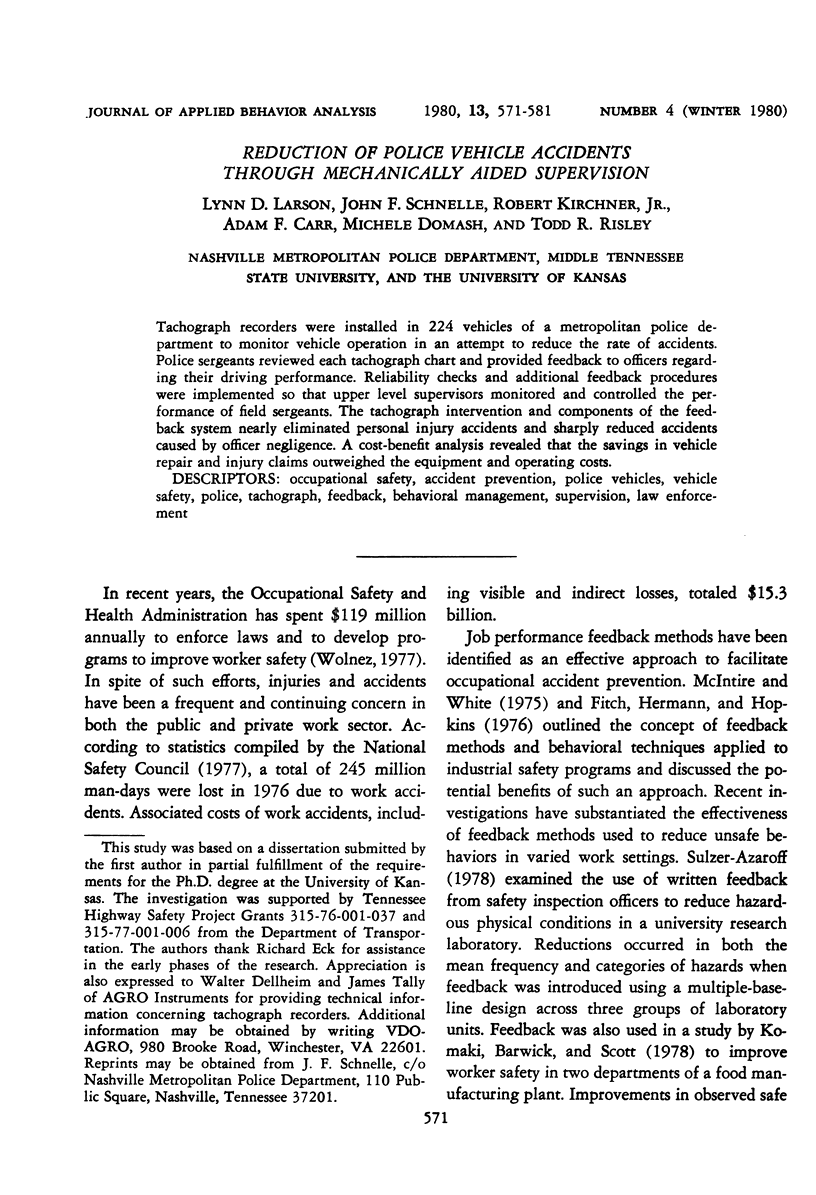
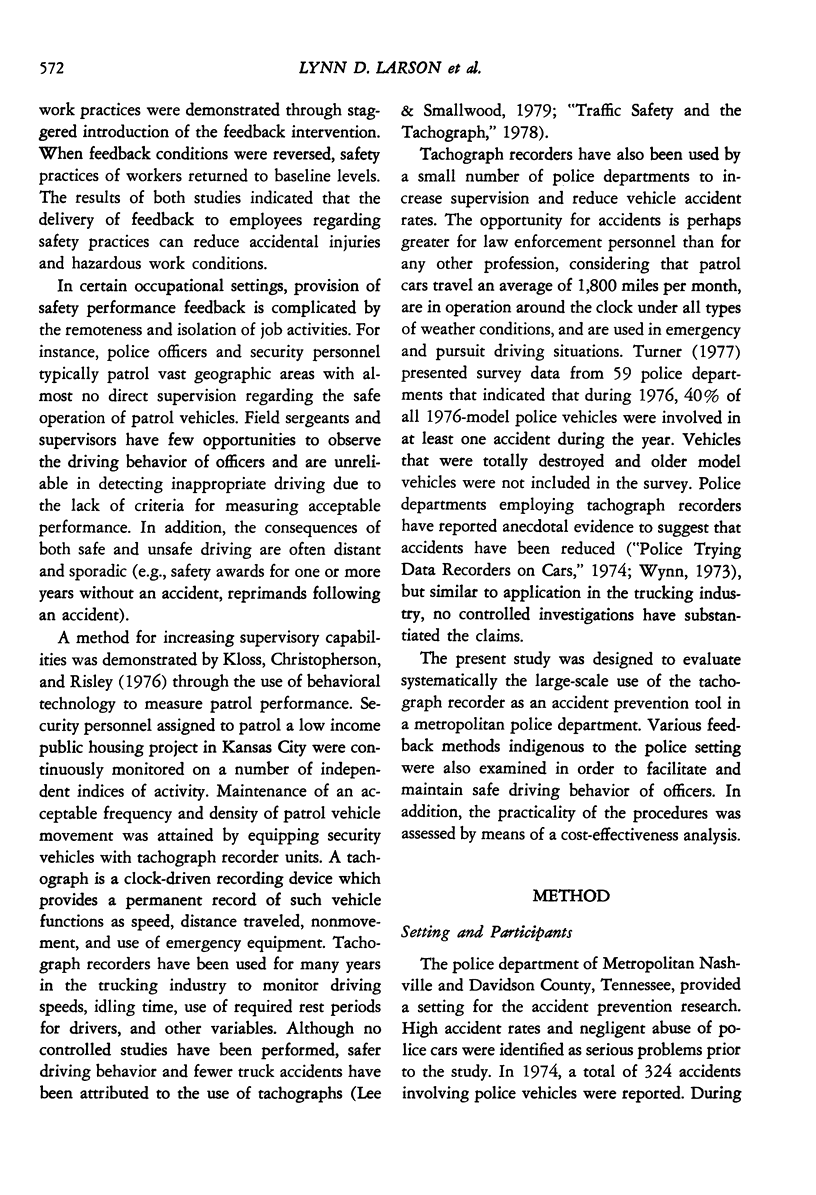
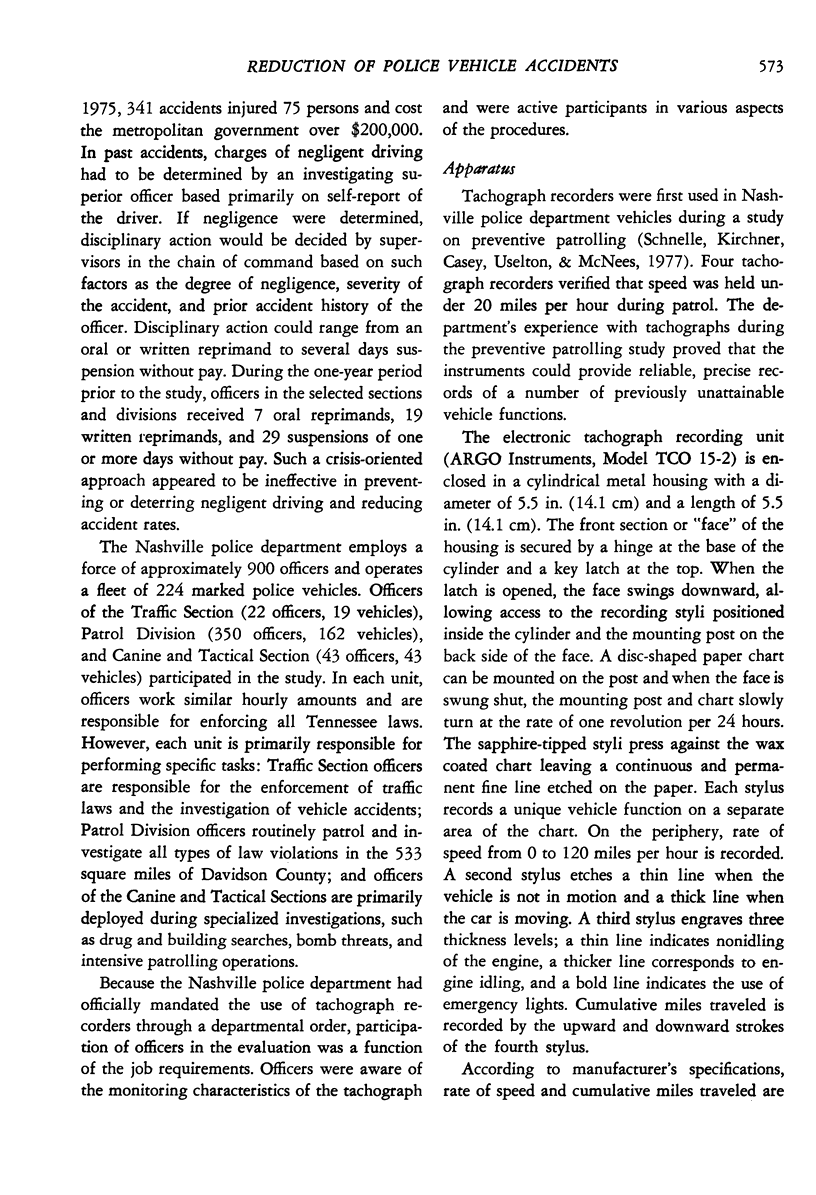
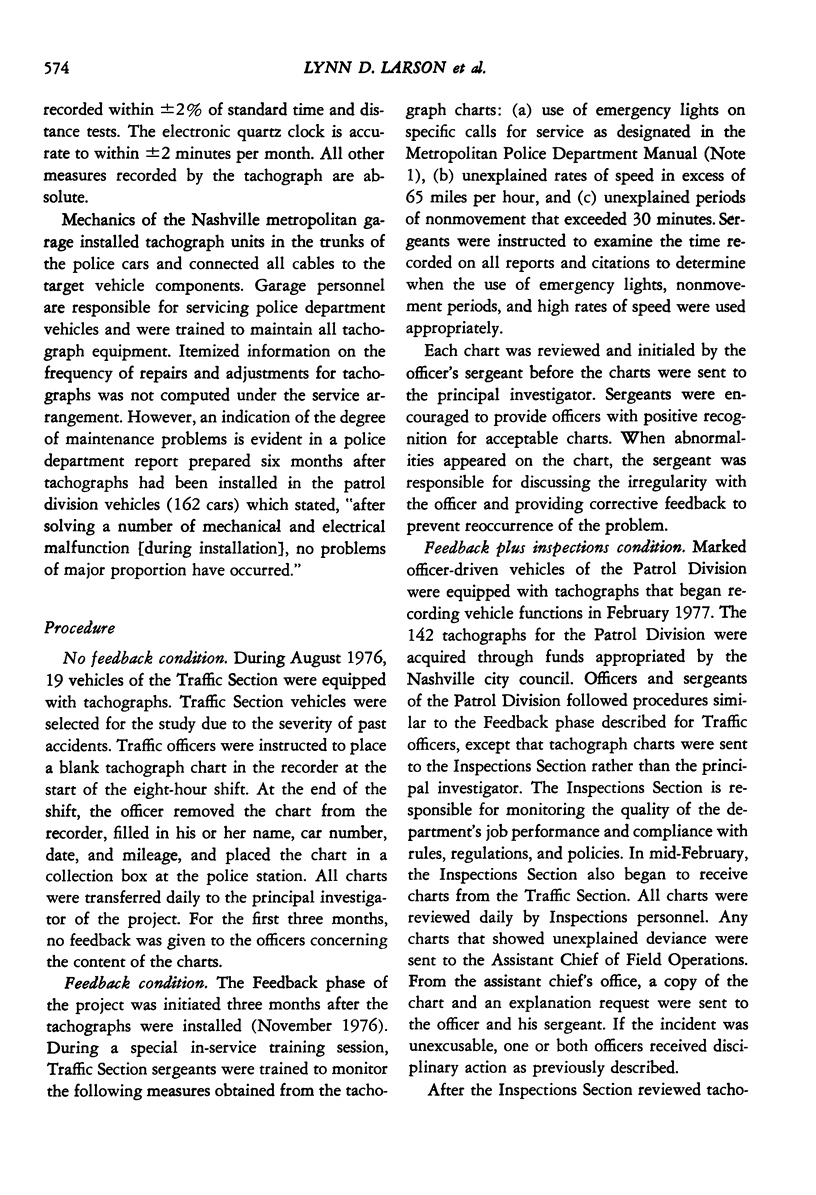
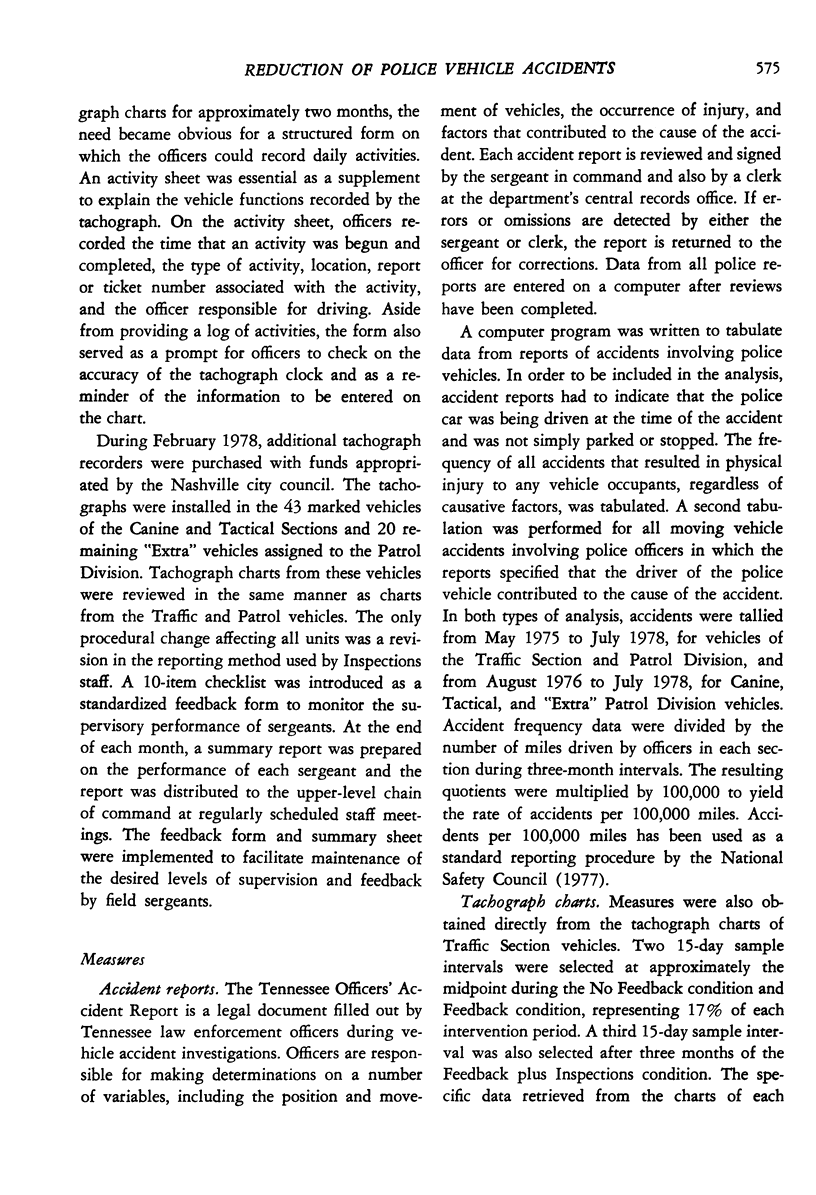
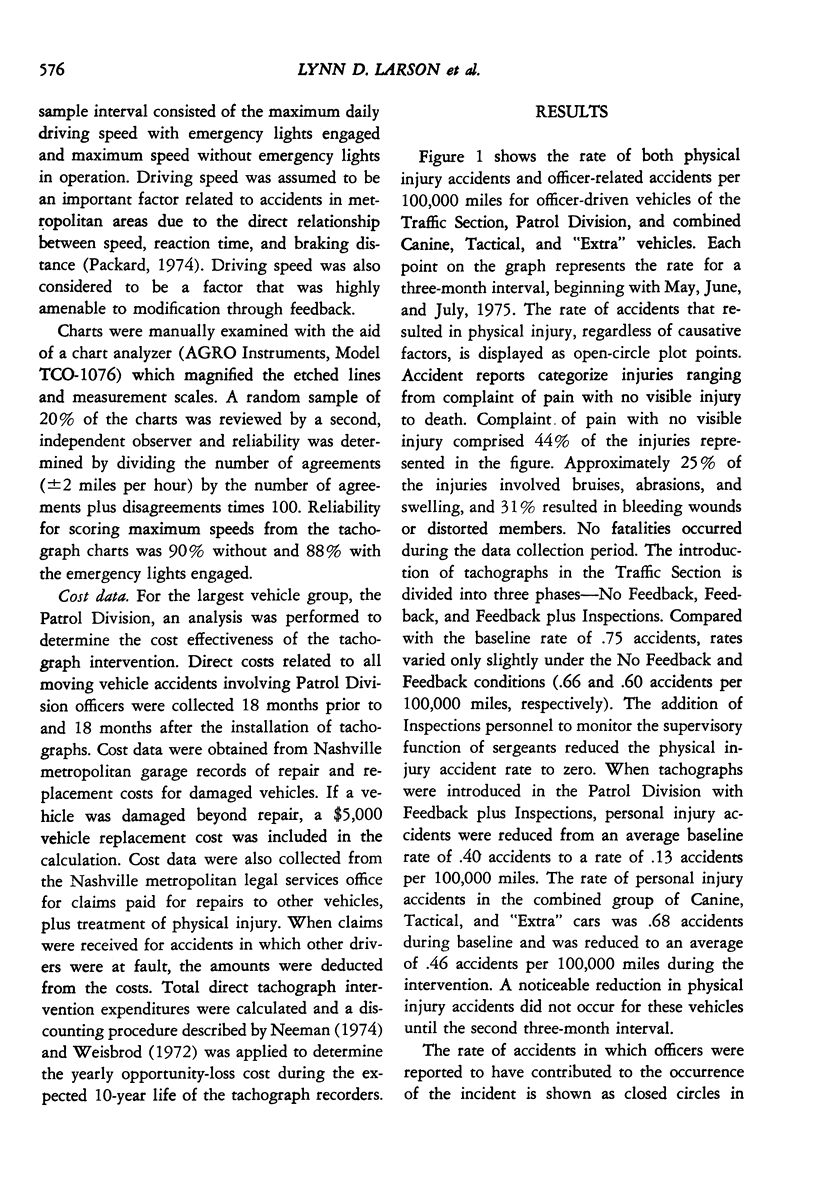
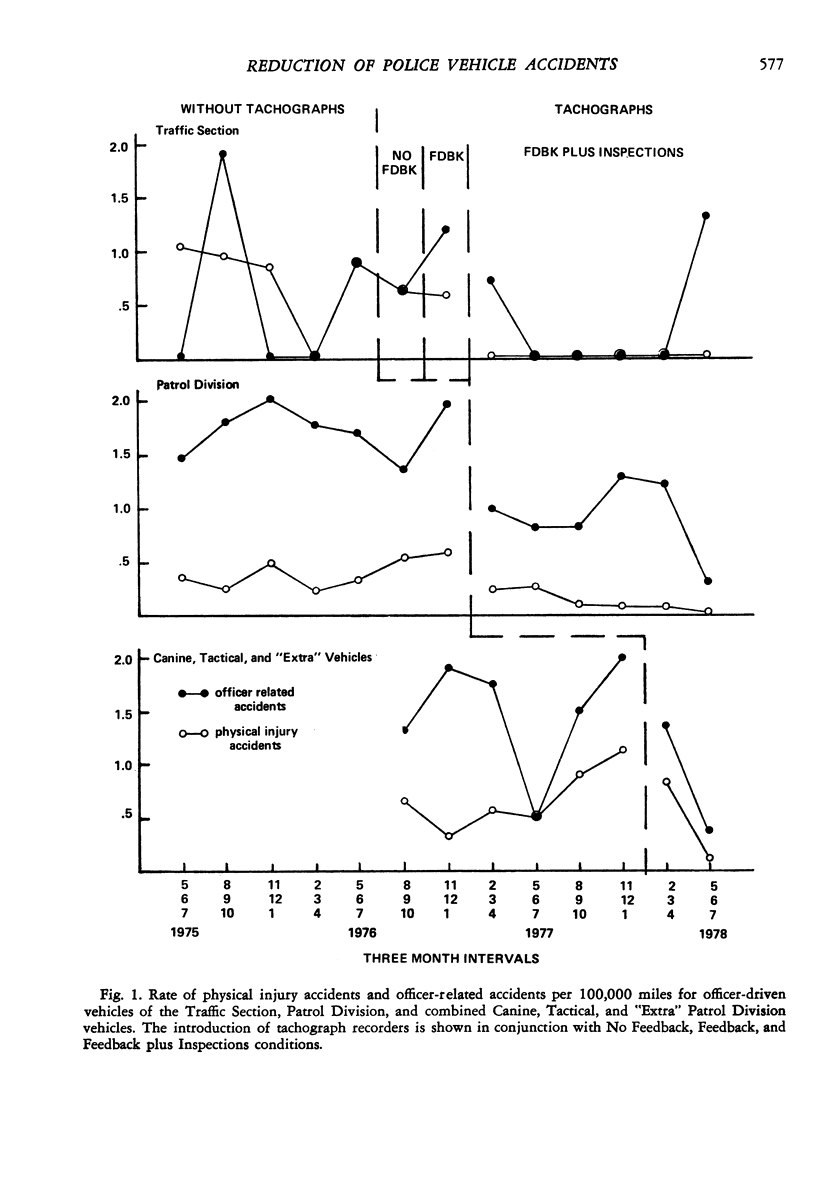
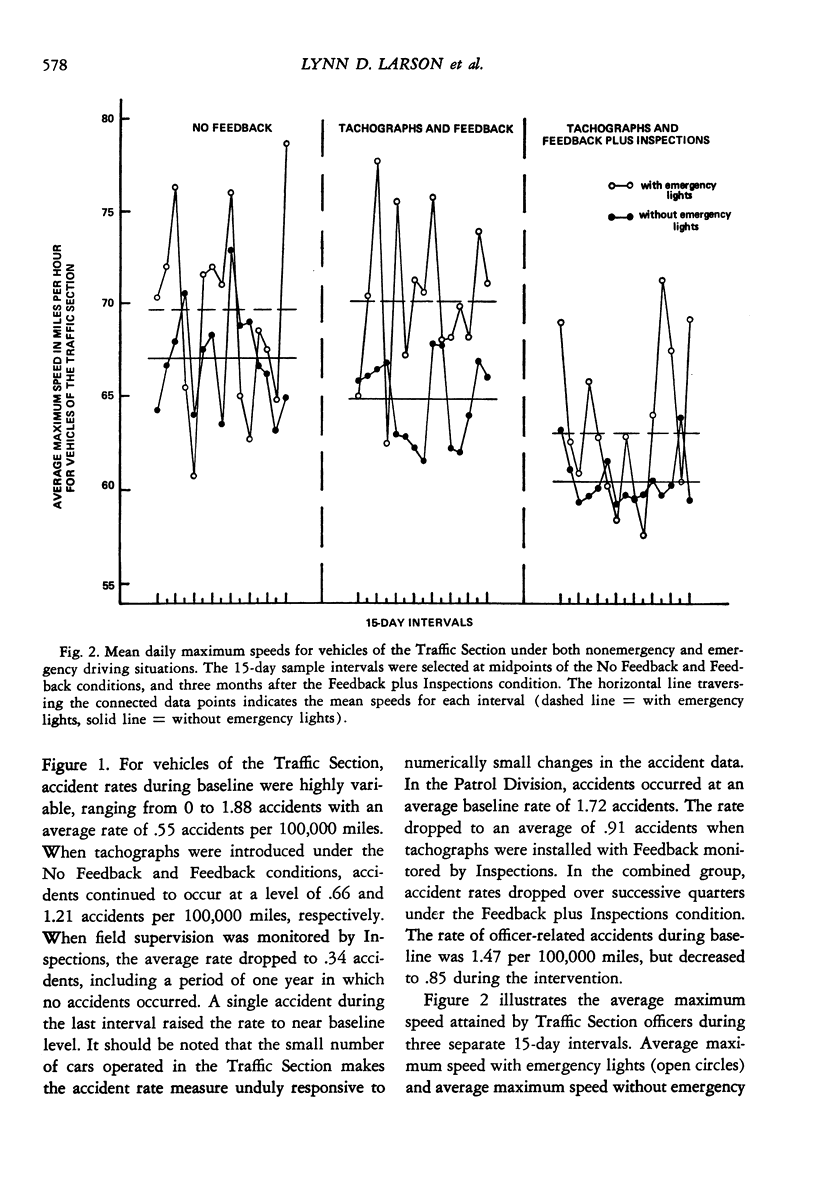
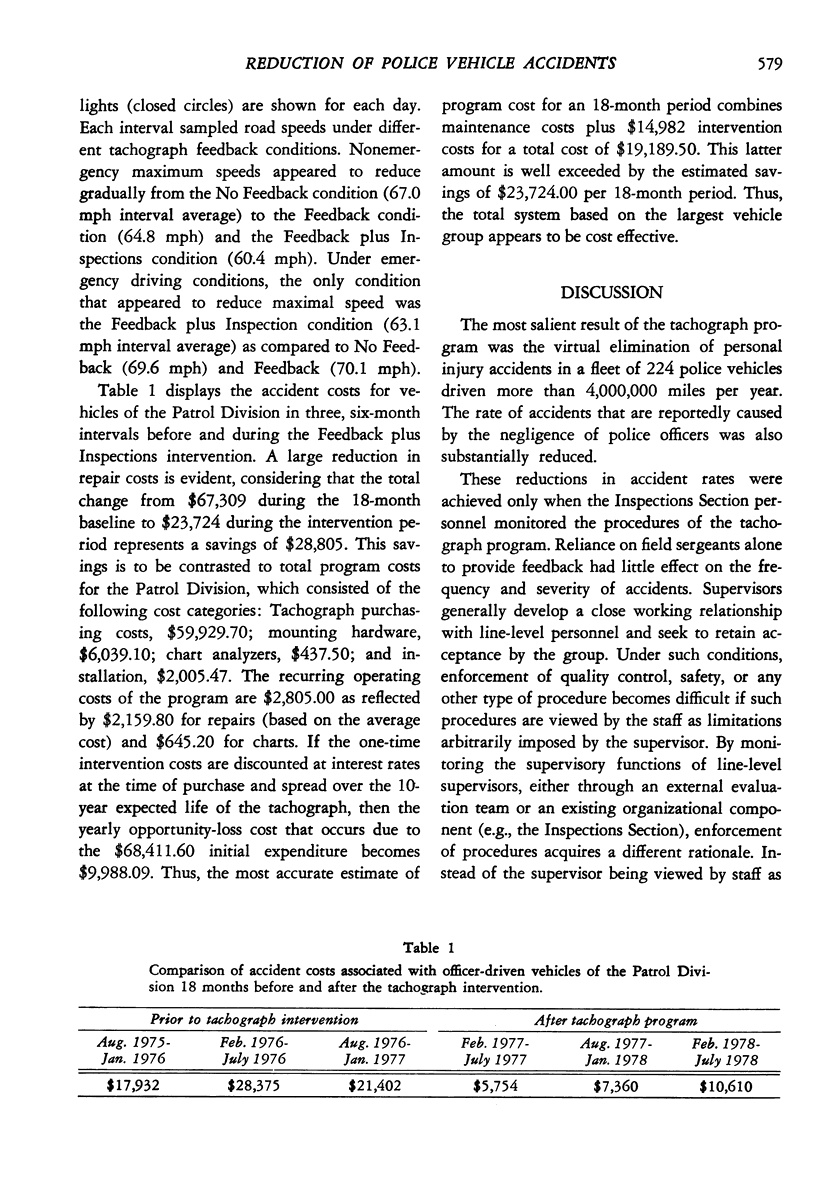
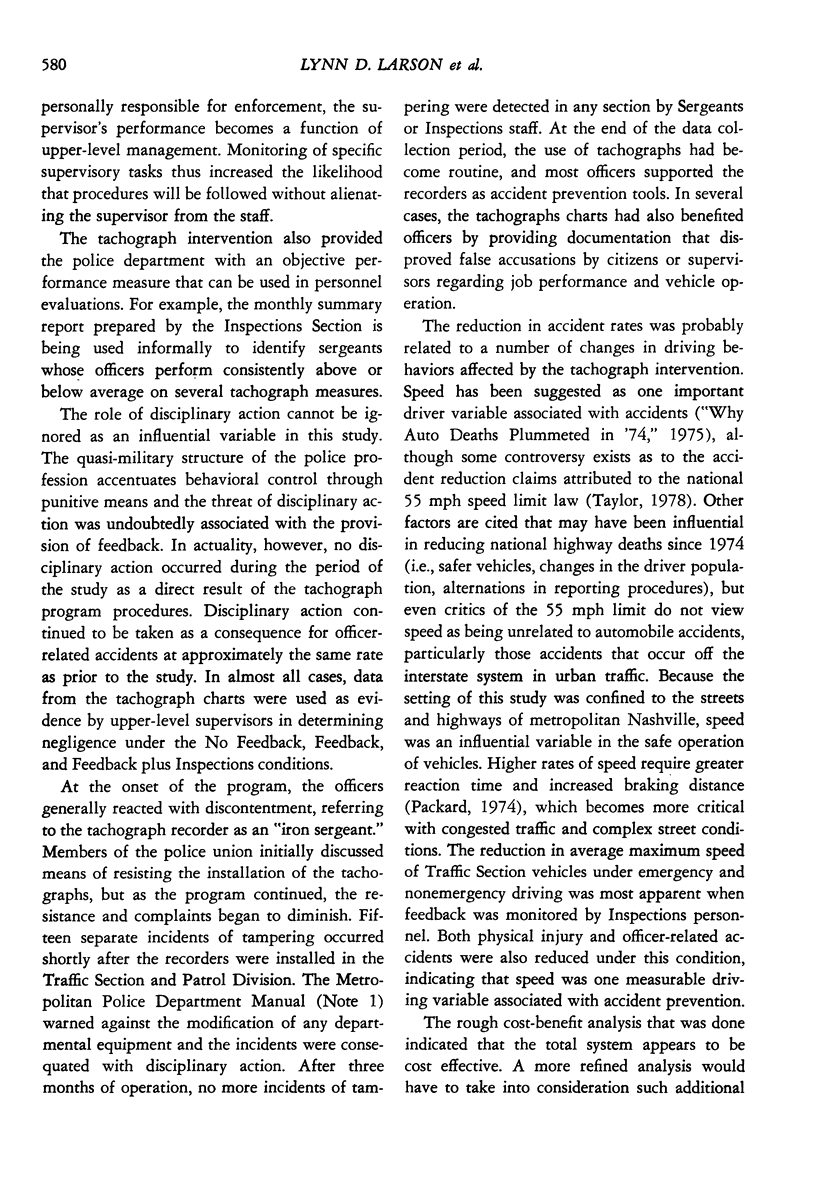
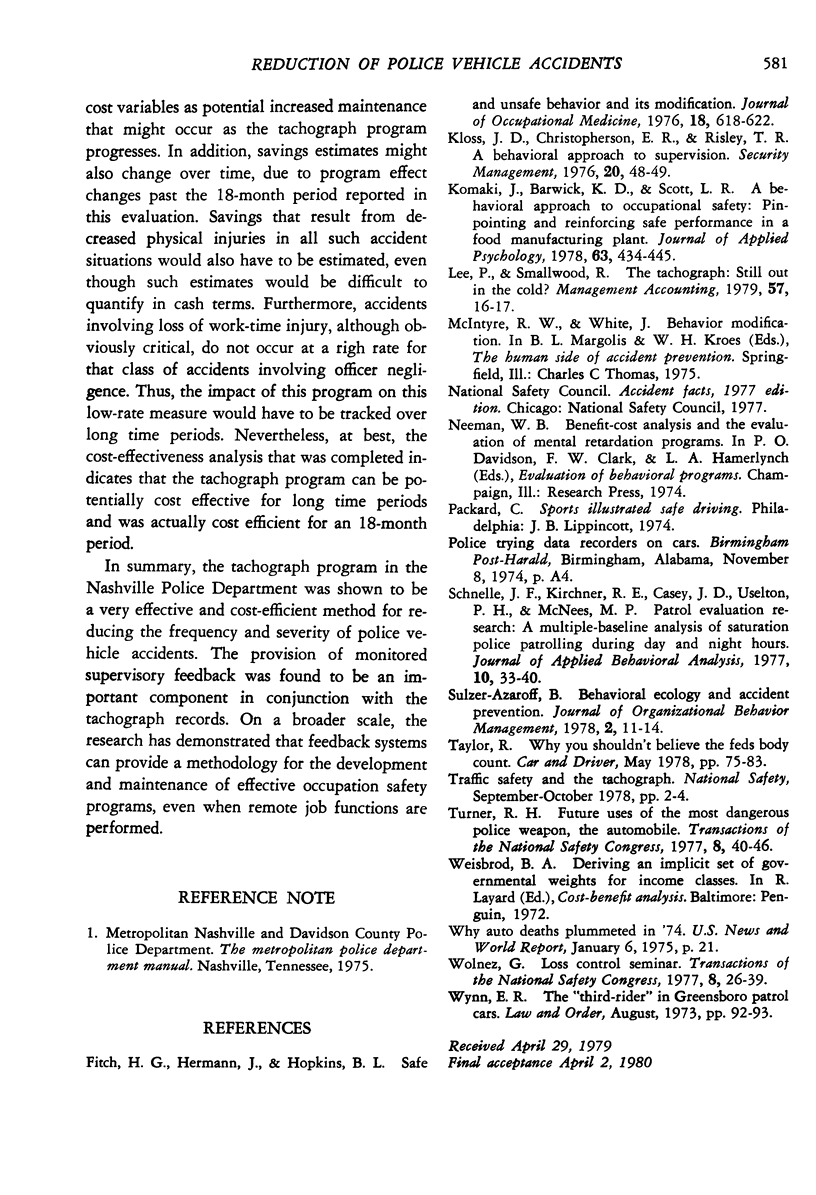
Selected References
These references are in PubMed. This may not be the complete list of references from this article.
- Fitch H. G., Hermann J., Hopkins B. L. Safe and unsafe behavior and its modification. J Occup Med. 1976 Sep;18(9):618–622. [PubMed] [Google Scholar]
- Komaki J., Barwick K. D., Scott L. R. A behavioral approach to occupational safety: pinpointing and reinforcing safe performance in a food manufacturing plant. J Appl Psychol. 1978 Aug;63(4):434–445. [PubMed] [Google Scholar]
- Schnelle J. F., Kirchner R. E., Casey J. D., Uselton P. H., McNees M. P. Patrol evaluation research: a multiple-baseline analysis of saturation police patrolling during day and night hours. J Appl Behav Anal. 1977 Spring;10(1):33–40. doi: 10.1901/jaba.1977.10-33. [DOI] [PMC free article] [PubMed] [Google Scholar]


